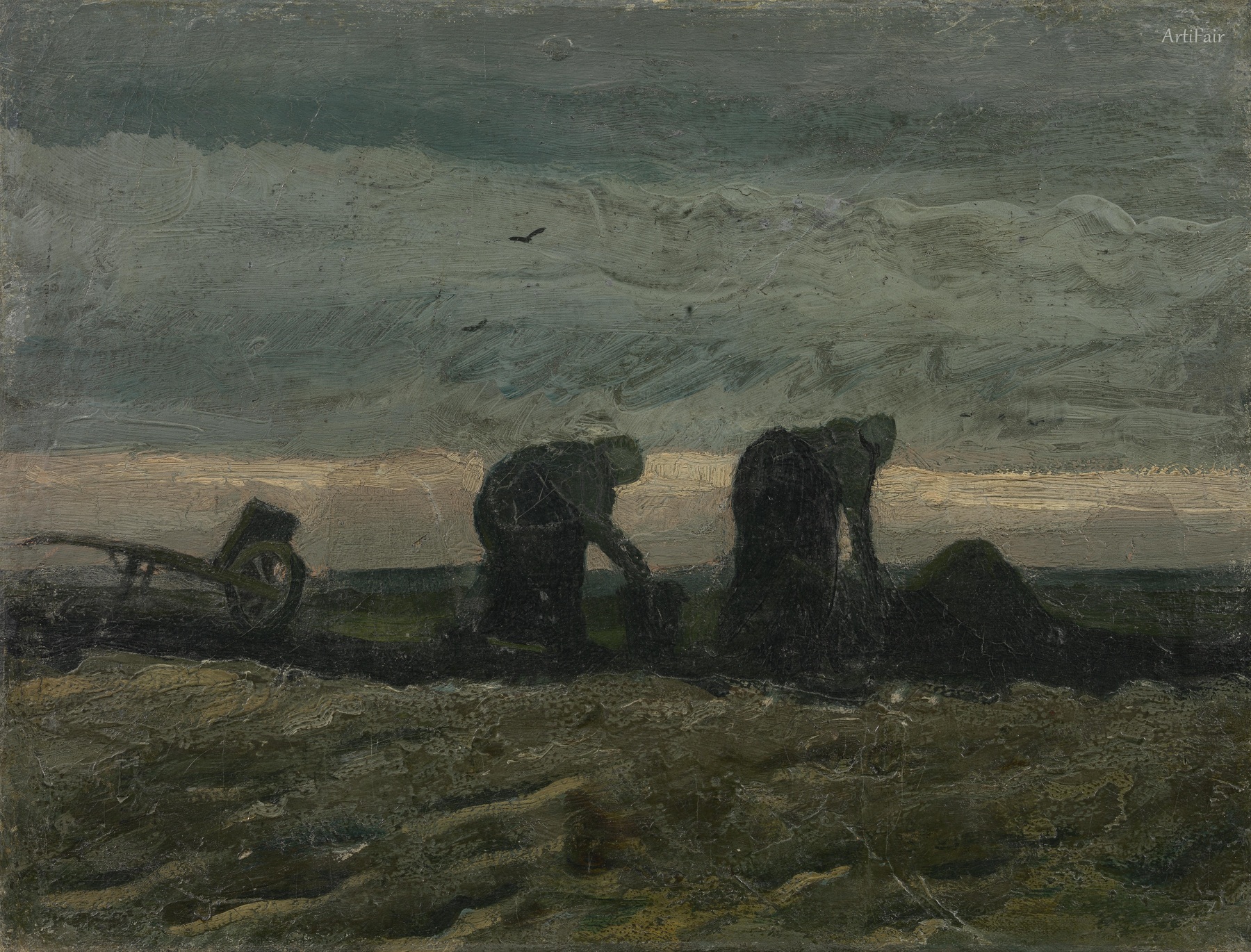
Art Appreciation
The artwork captures a haunting yet poignant moment in the life of laborers against a dramatically moody backdrop. The figures, shrouded in a fog-like haze, are immersed in their work, seemingly harvesting the earth in an endless cycle of toil. The silhouetted bodies of the workers create a powerful contrast against the tumultuous, swirling sky which is laden with heavy, brooding clouds. This atmospheric interplay evokes an emotional response that resonates deeply; there is a palpable sense of solitude and perseverance emanating from these figures, who seem at once fragile yet resilient amidst nature's harsh elements. The use of subdued colors—predominantly dark greens, grays, and the occasional sliver of light—intensifies this emotional weight, drawing the viewer into the melancholy of the scene.
The composition, with its foreground figures juxtaposed against the expansive sky, creates a sense of depth and expansive space while simultaneously enclosing the workers in their own world of labor. Van Gogh’s thick, expressive brushstrokes lend a sense of urgency and movement, capturing the very essence of a hard day's work on the moor. This artwork, created in 1883, reflects the artist’s fascination with the lives of rural workers, demonstrating his deep empathy toward their plight—a theme that would recur throughout his oeuvre. In this way, the piece is not just a depiction of labor; it is a testament to the human spirit, an acknowledgment of the beauty found in simplicity and struggle.